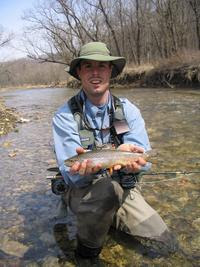 by David Bossman
by David BossmanLet’s not make any bones about it: We have a critical need to solve what is becoming a manure crisis in America. I’d like to show that by solving this problem, we can save America by restoring the economic viability of our rural communities.
America’s rural communities are becoming increasingly inhospitable toward livestock production. As a result, more and more of our nation’s meat, milk and egg producers are seeking communities that value and welcome them, instead of resisting their growth and income-producing potential.
We all know that there has been significant movement in animal production in the past 10 years. Many state and local zoning restrictions now prohibit the construction or expansion of Confined Animal Feeding Operations (CAFOs). The result is that this not only increases the CAFO size in the areas which accept them, but it also threatens the entire US animal feeding industry because many foreign countries are aggressively pursuing large-scale animal production.
CAFOs have a poor public perception. They are viewed as a factory-type of feeding, implying poor animal well-being practices. They are perceived—and I emphasize the term perceived—to be large corporate ownerships, instead of family-based farms, that use poor animal husbandry, thereby causing the use of high levels of antibiotics. And, finally, they are seen to produce large amounts of animal manure with unpleasant odor.
At this point, the historical solutions are no longer acceptable or applicable. CAFOs have too much manure to spread as fertilizer on neighboring land, and spreading manure can exacerbate the odor perception problem. And with today’s rural population becoming less and less involved in agriculture, the neighbors are no longer part of the animal production tradition.
Animal production operations have evolved in size and scope, from small family farms to the very large producers of today. CAFOs, an entirely new animal agriculture entity, have significantly impacted the method of animal protein production. Livestock production is frequently unprofitable unless a significant volume of scale can be achieved.
High volume, efficient producers are faced with numerous local, state and federal rules and mounting negative community attitudes. The overwhelming reason rural dwellers do not want livestock production in their communities is the odor from the manure. Yes, it smells, and in large volumes it can smell an awful lot!
Most of manure research has been in the area of fertilizer utilization even though using manure for fertilizer can exacerbate the odor situation within the community. There have been numerous research projects related to animal waste or manure. Land grant universities have built entire departments researching animal manure. Most of the research has focused on determining the effectiveness or value that manure has for fertilizer or plant food, or simply how to dispose of it as a solid waste. Research also has been conducted to determine the nutritional value of manure to be used as livestock feed.
A lot of research has been done regarding the use of lagoons to store manure. A significant body of research also has been conducted for odor control in various ways, including adding chemicals and blending. That said, however, the problem is getting worse instead of better.
Everyone in the ag industry should know the problems of animal manure and even the reasons why the problem exists. Now we must focus on the solutions. The solutions aren’t all that hard to identify; we know that if all manure had the odor of freshly baked bread, the problem would not exist. The negative attitudes toward high density animal production would disappear. However, there is little chance that even the best researchers could make that happen. So we need new solutions.
Animal nutritionists are finding, and will continue to find the perfect diet, one that will maintain maximum production or growth with little or no waste. That, too, is some years away. Therefore our challenge, your challenge, is to make the existing animal waste more transportable, less odor offensive and to find high
value uses.
Technology has created changes in animal agriculture. It gave us mechanical technology which allowed larger operations to operate at lower cost. Technology also improved genetics, allowing faster and more efficient growth. Technology also afforded superior animal nutrition, which enhances genetics. It is now time for technology to solve one of the critical problems it has also created. Because CAFOs are the lowest cost animal production method, technology has to solve the CAFO problem of too much manure in too small a space.
Examples of new applied technology include using manure as industrial feedstock for production of geo-textiles and geo-plastics or industrial adhesives. These uses will improve the environment by keeping manure off ground water.
Finding non-fertilizer uses for animal waste is critical to the continued long-term animal protein production in the United States. We’ll look at some of these other uses in the next issue of Manure Manager.
David Bossman is past president of the American Feed Industry Association.
Source: Manure Manager




No comments:
Post a Comment